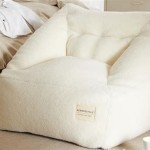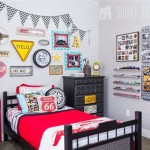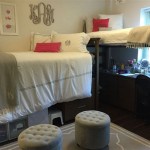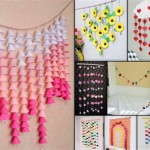How To Decorate Your Study Table DIY
A dedicated study space is crucial for effective learning and productivity. A study table, often the central point of this space, can significantly influence focus and motivation. Decorating a study table using do-it-yourself (DIY) methods allows for personalization, creating an environment conducive to concentration and creativity. This article presents methods for achieving an aesthetically pleasing and functional study table through DIY decoration, emphasizing organization, personalization, and budget-consciousness.
Organization as the Foundation of Decoration
Before introducing decorative elements, establishing an organized workspace is essential. Clutter detracts from focus and can hinder productivity. Effective organization involves decluttering, categorizing, and utilizing storage solutions.
The initial step involves decluttering the existing items on the study table. This includes removing unnecessary objects, papers, and stationery. Categorizing remaining items based on frequency of use and purpose allows for efficient storage planning. Items used daily, such as pens, pencils, and notebooks, merit prime placement, while less frequently used materials can be stored in drawers or designated storage containers.
DIY storage solutions offer economical and personalized options. Repurposing existing containers, such as mason jars or tin cans, provides storage for stationery. These can be painted, decorated with fabric scraps, or labeled for easy identification. Cardboard boxes can be transformed into storage organizers by covering them with decorative paper or fabric. These are suitable for storing books, files, or other study materials.
Vertical organization maximizes space and minimizes clutter. A DIY pegboard organizer allows for customizable storage of various items. Pegboards can be painted to match the room's decor and equipped with hooks, shelves, and containers to hold stationery, tools, and small items. A DIY bookshelf, constructed from repurposed wooden pallets or crates, offers ample storage for books and reference materials. Shelving units can be mounted on the wall above the desk to keep the tabletop clear.
Cable management is another critical aspect of study table organization. Tangled cables can be visually distracting and hinder workflow. DIY cable management solutions include using binder clips to route cables along the edge of the table, securing cables with Velcro straps, or creating a cable box from a repurposed container to conceal excess cable length. These measures contribute to a cleaner and more organized workspace.
Personalization Through Decorative Elements
After establishing an organized foundation, personalizing the study table with decorative elements enhances the aesthetic appeal and creates a more inviting study environment. Personalization involves incorporating items that reflect individual interests, preferences, and learning styles.
DIY artwork and decorations offer a cost-effective and personal way to enhance the visual appeal of the study table. Creating a gallery wall above the desk featuring personal artwork, photographs, or inspirational quotes adds a touch of personality. DIY artwork can include watercolor paintings, abstract art created with acrylics, or framed prints of favorite designs. Displaying personal photographs or postcards can evoke positive memories and create a sense of comfort and familiarity.
Repurposing old materials into decorative items demonstrates creativity and resourcefulness. Old books can be repurposed into decorative bookends by painting them or covering them with fabric. Glass bottles can be transformed into vases by painting them or wrapping them with twine or decorative paper. These repurposed items add a unique and personalized touch to the study table.
Plants bring vibrancy and freshness to the study space. Small potted plants, such as succulents or cacti, are low-maintenance and add a touch of nature to the desk. A DIY terrarium, created in a glass jar or container, provides a miniature ecosystem that can be both visually appealing and educational. Plants not only enhance the aesthetic appeal of the study table but also improve air quality and create a more calming and conducive learning environment.
String lights or fairy lights can add a warm and inviting ambiance to the study table. These can be draped along the edge of the desk, wrapped around a bulletin board, or hung above the desk to create a soft and diffused light. String lights are particularly useful for creating a cozy and relaxing atmosphere, especially during evening study sessions. DIY lamps can also be constructed from repurposed materials, such as glass bottles or wooden blocks, providing personalized lighting solutions.
Functionality and Ergonomics in Decoration
While aesthetic appeal is important, functionality and ergonomics should not be overlooked when decorating a study table. The arrangement of items on the desk should facilitate efficient workflow and promote good posture. Incorporating ergonomic accessories and organizing items based on frequency of use can significantly improve comfort and productivity.
A DIY monitor stand or laptop stand can elevate the screen to eye level, reducing strain on the neck and shoulders. These stands can be constructed from wood, repurposed boxes, or stacked books. Elevating the monitor or laptop promotes better posture and reduces the risk of musculoskeletal problems associated with prolonged sitting.
Ergonomic accessories, such as a wrist rest for the keyboard and mouse, can provide additional support and reduce strain on the wrists and hands. A DIY wrist rest can be created from fabric and filling, such as rice or beans. These accessories can improve comfort during long study sessions and prevent repetitive strain injuries.
A bulletin board or whiteboard placed above or next to the study table provides a convenient space for organizing notes, reminders, and to-do lists. A DIY bulletin board can be created from fabric, corkboard, or repurposed materials. A whiteboard allows for easy brainstorming and note-taking. These tools facilitate organization and task management.
Proper lighting is crucial for reducing eye strain and promoting focus. A desk lamp should provide adequate illumination without causing glare or shadows. A DIY desk lamp can be constructed from repurposed materials, such as a vintage lamp base or a metal pipe. The lamp should be positioned to provide optimal lighting for reading and writing tasks. Natural light is also important, so positioning the study table near a window can provide additional illumination and create a more pleasant study environment.
The arrangement of items on the study table should be based on frequency of use and accessibility. Items used most frequently, such as pens, pencils, and notebooks, should be placed within easy reach. Less frequently used items can be stored in drawers or storage containers. This arrangement promotes efficient workflow and minimizes distractions.

12 Easy Study Table Decoration Ideas For Home

9 Study Desk Decor Ideas Room Diy

12 Easy Study Table Decoration Ideas For Home

Diy Study Table Ideas To Make Your Life Easier

12 Easy Study Table Decoration Ideas For Home

Study Table Decoration Organization Ideas Desk Makeover Aesthetic

Diy Desk Organizer Decor Ideas Study Table Decoration Paper Crafts For School

26 Diy Desk Decor Ideas Tips You Need In Your Life

Study Table Aesthetic Style

12 Easy Study Table Decoration Ideas For Home







